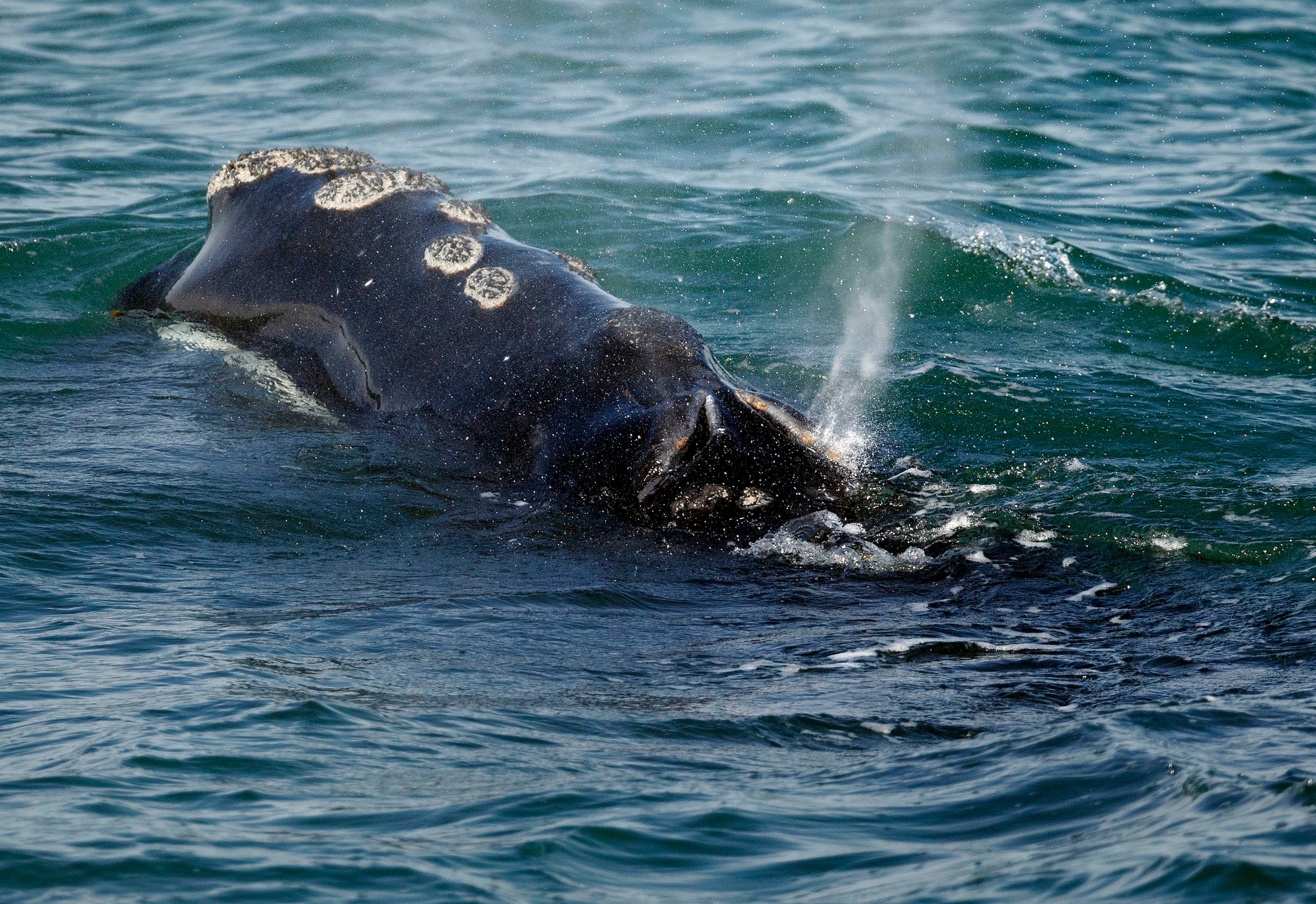Decline of rare right whale appears to be slowing, but scientists say big threats remain
The decline of one of the rarest whales in the world appears to be slowing, but scientists warn the giant animals still face existential threats from warming oceans, ship collisions and entanglement in fishing gear

Your support helps us to tell the story
From reproductive rights to climate change to Big Tech, The Independent is on the ground when the story is developing. Whether it's investigating the financials of Elon Musk's pro-Trump PAC or producing our latest documentary, 'The A Word', which shines a light on the American women fighting for reproductive rights, we know how important it is to parse out the facts from the messaging.
At such a critical moment in US history, we need reporters on the ground. Your donation allows us to keep sending journalists to speak to both sides of the story.
The Independent is trusted by Americans across the entire political spectrum. And unlike many other quality news outlets, we choose not to lock Americans out of our reporting and analysis with paywalls. We believe quality journalism should be available to everyone, paid for by those who can afford it.
Your support makes all the difference.The decline of one of the rarest whales in the world appears to be slowing, but scientists warn the giant mammals still face existential threats from warming oceans, ship collisions and entanglement in fishing gear.
The population of North Atlantic right whales, which live off the U.S. East Coast, fell by about 25% from 2010 to 2020 and was down to only about 364 whales as of 2021. Now the whales are at around 356 in total, according to a group of scientists, industry members and government officials who study them.
This suggests the population is potentially levelling off, as equal numbers of whales could be entering the population as are being killed, the North Atlantic Right Whale Consortium said Monday. However, getting an accurate count of the aquatic creatures involves certain ranges of error, which put estimates for 2021 and 2022 at roughly around the same number.
The whales were buoyed by a strong birthing year in 2021, when 18 calves were born into the population, the consortium said. However, consortium members cautioned that the high mortality faced by the whales from collisions and entanglement remains an unsustainable burden.
“The news is less bad than it has been. My heart is a little less heavy, but certainly not light or hopeful,” said Philip Hamilton, a consortium board member and a senior scientist at the Anderson Cabot Center for Ocean Life at the New England Aquarium. “It shouldn't be dependent on the whales to give birth to enough calves to reverse what we're doing to them.”
Tangled up in nets and heavy ropes, the gentle giants can drown when they're unable to reach the surface, or they can suffer grievous, life-threatening injuries.
Once numerous, their populations were decimated during the commercial whaling era. They have been federally protected for decades.
Scientists say one reason the whales are now in decline has to do with warming oceans and climate change. The whales, which can weigh well over 100,000 pounds (45,359 kilograms), sustain themselves by eating tiny ocean organisms called copepods. They journey from calving grounds off Florida and Georgia to feeding grounds off New England and Canada every year.
As waters have warmed, the whales must wander outside protected areas of ocean in search of food. That has left them vulnerable to the collisions with large ships and getting trapped in commercial fishing gear, which are their biggest causes of early mortality.
Numerous lobster fishermen have opposed proposed fishing restrictions they fear would put them out of business rather than help whales. Dave Cousens, a past president of the Maine Lobstermen’s Association, has called the proposed rules “nonsensical.”
Conservationists want new rules to protect the whales. Federal authorities have said they anticipate final action on a proposed vessel speed rule this year. Proposed new fishing laws are also in the works, but they have led to a lengthy court battle.
“There is still hope for the species. Things are dire, that is true. But with the right things in place, like adjustments to the speed rule, there is still hope for the future,” said Katie Moore, deputy vice president for animal rescue with International Fund for Animal Welfare.
National Marine Fisheries Service assistant administrator Janet Coit said the agency launched a new tool on its website last week that is designed to allow the agency to monitor and share how effective speed regulations are at slowing down ships to reduce the threat of collisions. Coit said that is part of the government's plan to “monitor the effectiveness of conservation efforts” to save the whale.
The right whale consortium said sublethal injuries to whales from collisions and fishing gear are also a major concern for the remaining population. Badly injured or sick whales are less likely to reproduce.